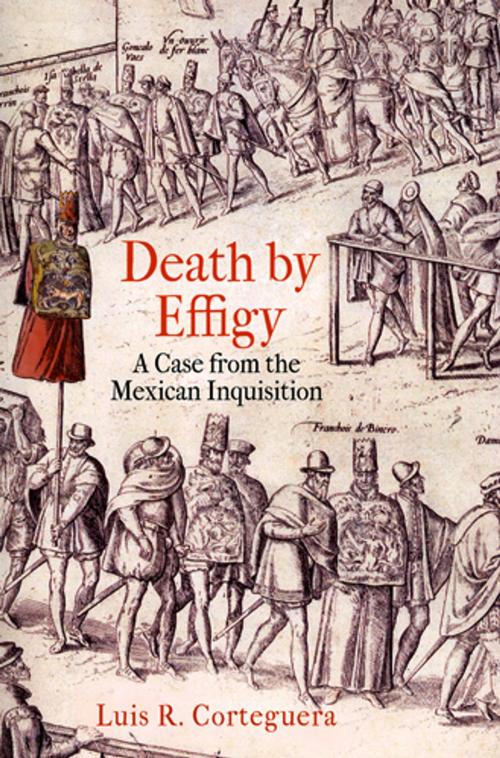| Author: | Luis R. Corteguera | ISBN: | 9780812207057 |
| Publisher: | University of Pennsylvania Press, Inc. | Publication: | September 5, 2012 |
| Imprint: | University of Pennsylvania Press | Language: | English |
| Author: | Luis R. Corteguera |
| ISBN: | 9780812207057 |
| Publisher: | University of Pennsylvania Press, Inc. |
| Publication: | September 5, 2012 |
| Imprint: | University of Pennsylvania Press |
| Language: | English |
On July 21, 1578, the Mexican town of Tecamachalco awoke to news of a scandal. A doll-like effigy hung from the door of the town's church. Its two-faced head had black chicken feathers instead of hair. Each mouth had a tongue sewn onto it, one with a forked end, the other with a gag tied around it. Signs and symbols adorned the effigy, including a sambenito, the garment that the Inquisition imposed on heretics. Below the effigy lay a pile of firewood. Taken together, the effigy, signs, and symbols conveyed a deadly message: the victim of the scandal was a Jew who should burn at the stake. Over the course of four years, inquisitors conducted nine trials and interrogated dozens of witnesses, whose testimonials revealed a vivid portrait of friendship, love, hatred, and the power of rumor in a Mexican colonial town.
A story of dishonor and revenge, Death by Effigy also reveals the power of the Inquisition's symbols, their susceptibility to theft and misuse, and the terrible consequences of doing so in the New World. Recently established and anxious to assert its authority, the Mexican Inquisition relentlessly pursued the perpetrators. Lying, forgery, defamation, rape, theft, and physical aggression did not concern the Inquisition as much as the misuse of the Holy Office's name, whose political mission required defending its symbols. Drawing on inquisitorial papers from the Mexican Inquisition's archive, Luis R. Corteguera weaves a rich narrative that leads readers into a world vastly different from our own, one in which symbols were as powerful as the sword.
On July 21, 1578, the Mexican town of Tecamachalco awoke to news of a scandal. A doll-like effigy hung from the door of the town's church. Its two-faced head had black chicken feathers instead of hair. Each mouth had a tongue sewn onto it, one with a forked end, the other with a gag tied around it. Signs and symbols adorned the effigy, including a sambenito, the garment that the Inquisition imposed on heretics. Below the effigy lay a pile of firewood. Taken together, the effigy, signs, and symbols conveyed a deadly message: the victim of the scandal was a Jew who should burn at the stake. Over the course of four years, inquisitors conducted nine trials and interrogated dozens of witnesses, whose testimonials revealed a vivid portrait of friendship, love, hatred, and the power of rumor in a Mexican colonial town.
A story of dishonor and revenge, Death by Effigy also reveals the power of the Inquisition's symbols, their susceptibility to theft and misuse, and the terrible consequences of doing so in the New World. Recently established and anxious to assert its authority, the Mexican Inquisition relentlessly pursued the perpetrators. Lying, forgery, defamation, rape, theft, and physical aggression did not concern the Inquisition as much as the misuse of the Holy Office's name, whose political mission required defending its symbols. Drawing on inquisitorial papers from the Mexican Inquisition's archive, Luis R. Corteguera weaves a rich narrative that leads readers into a world vastly different from our own, one in which symbols were as powerful as the sword.















